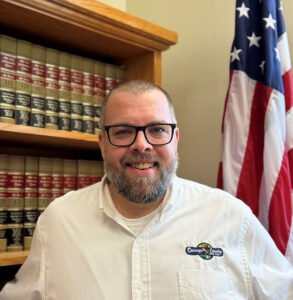By Stefan Yablonski
Recently on AMA News Wire, Bobby Mukkamala, president, posted:
“There are tremendous gaps in health care today that require the attention of physicians and leaders in organized medicine — but it all starts with timely access to quality care. Alarming projections about the physician workforce shortage to come ignore the fact that, for many patients in every corner of this country, that shortage has already arrived.”
Is the doctor shortage a big deal in CNY?
“Yes, it is a huge deal in Central New York,” said physician Amine Hila, chief medical officer at St. Joseph’s Health. “It is a problem across the nation. It was exacerbated by COVID-19. A lot of people retired — and a lot of physicians are retiring at an earlier age than they used to. The baby boomer generation is retiring and at the same time our population is aging. So at this point, we are not even able to nationally replace the retiring physicians. We need to provide care to the increasing older population.”
George W. Chapman, an industry expert and medical contributor for In Good Health newspaper, said the situation has been developing over a period of time. “Our once formidable ‘front line’ primary care providers is battle weary and in retreat.”
Thanks to the lack of any planning at the national level, coupled with decades of chronic underinvestment, providers are leaving the front line of primary care, favoring better resources and lifestyle available in non primary specialties, he added.
“While the factors driving this situation are complex the solutions aren’t difficult to find,” said Mukkamala, the AMA president. “The process starts with removing the administrative headaches that fuel burnout and are contributing to early retirement decisions by physicians. A second critical solution is reforming an antiquated Medicare payment system that has seen physician reimbursement drop by more than 33% since 2001, creating enormous financial hardships for independent practices like mine in Flint, Michigan. A third solution lies with greatly expanding the number of Medicare-funded graduate medical education residency slots, with particular emphasis on areas and specialties with critical shortages such as primary care and psychiatry. The AMA enthusiastically supports the newly introduced Resident Physician Shortage Reduction Act of 2025, which would add 14,000 Medicare GME positions over seven years and codify the Rural Residency Planning and Development Program. This bipartisan measure will help ensure patients have access to well-trained physicians in their communities by expanding training opportunities in both urban and rural hospitals with the greatest workforce needs.”
Decrease access
Fewer primary care providers results in longer wait times for appointments across all specialties; decreased access, especially in rural areas, and higher costs due to increased use of specialists and overwhelmed emergency rooms, according to Chapman.
Said Oswego Health president and CEO Michael Backus: “Like many healthcare systems across New York and the nation, Oswego Health faces historic financial pressure. Costs are rising sharply, driven by inflation, workforce shortages and supply chain constraints, while reimbursements remain stagnant. The recently passed New York state budget does not adequately address the growing gap between the cost of care and the resources available to provide it.”
Backus said he is actively engaged in conversations with elected officials at both the state and federal levels to advocate for the healthcare needs of Oswego County.
“This includes ongoing efforts to ensure our concerns are represented as budget negotiations continue, particularly in light of the proposed changes to Medicaid,” he said.
He outlined many of these challenges — and the potential impact on rural hospitals — in an OpEd piece in the Post-Standard earlier this spring.
“We face a far more devastating threat: a near $880 billion reduction in federal funding for Medicaid over the next decade coming from Washington,” he wrote. “This proposal would be catastrophic for communities like ours.”
“While we await further clarity from the state on how these cuts will be implemented locally, we remain focused on protecting access to care for the communities we serve,” he added.
Difficult to attract doctors to Upstate
“In Upstate New York we face challenges somewhat related to we are not as attractive as other states, said Hila, the chief medical officer at St. Joe’s. “A lot of the younger generation prefers to be somewhere where they have a better quality of life — where they can jog daily or walk their dog all year round or play golf.
“Obviously I am not one of them; I have lived in Upstate New York for 20 years,” Hila continued. “It is very, very difficult for us to attract. So we have to be imaginative.”
The shortage has also been exacerbated by the trend of a lot of remote work, he added.
“There are a lot of specialties that are moving to remote like radiology and pathology. They can just do it from a computer.
“There are a lot of places doing telehealth,” he said. “And so it exacerbates our challenge because we need people to take care of people in person for a lot of things.
“We are trying to push and find imaginative ways to attract and retain physicians and other healthcare workers — the challenge is everywhere. Part of that is for us to train more physicians locally. We are developing programs to increase the number of training programs. If you train them here there is a much higher likelihood they will stay here.”




